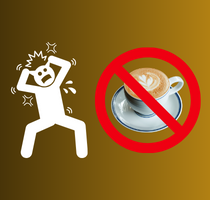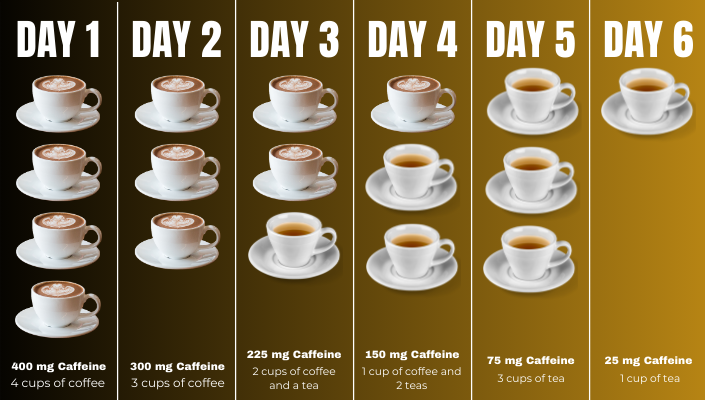The Withdrawal of Caffeine
Understanding Caffeine Withdrawal
Caffeine withdrawal occurs in the body when a person who regularly consumes caffeine, experiences a reduction in, or complete lack of caffeine intake.
This sometimes abrupt change can trigger a range of symptoms. These symptoms often intensify within the first 24 to 48 hours after the last dose is consumed.
Common caffeine withdrawal symptoms include severe headaches, fatigue, irritability, and difficulty concentrating.

Acknowledging these symptoms as a natural withdrawal response is essential for the individuals who are going through this experience.
Introduction
The withdrawal of caffeine is a process that many individuals go through for various reasons, ranging from health concerns to a desire for reduced dependency.
Caffeine is a central nervous system stimulant found in coffee, tea, certain fizzy drinks, and even chocolate.
It can lead to physical, and psychological dependence when consumed frequently.
Understanding and managing the process of caffeine withdrawal is essential for minimising the symptoms and ensuring a successful process.
Understanding the Signs and Symptoms of Caffeine Withdrawal:
Caffeine has become an integral part of my, and many people’s daily routines.
However, when individuals decide to cut back or eliminate their caffeine intake, they may experience a cluster of repercussions.
The symptoms of caffeine withdrawal can manifest both physically and mentally, often presenting as a challenging process for those attempting to break free from their caffeine habits.
However, it is important to note, that the intensity and duration of these symptoms can vary from person to person.
The symptoms can be influenced by factors such as the amount of caffeine previously consumed, individual tolerance levels, and overall health.
Physical Signs and Symptoms of Withdrawal Are:
- Mild to throbbing headaches.
- Muscle pain and stiffness.
- Constipation or digestive problems.
- Sleep disturbances.
In my experience, headaches are the most prevalent symptom.
Mental Signs and Symptoms of Withdrawal Are:
- Difficulty concentrating
- Irritability
- Fatigue
- Flu-like symptoms
- Low mood
- Dizziness or lightheadedness
Gradual Reduction Strategies:
To ease the impact of caffeine withdrawal, consider implementing a gradual reduction strategy. Abruptly discontinuing caffeine intake can make withdrawal symptoms worse. You can start by identifying your average daily caffeine intake and then gradually reduce it over a week or two.



For example, if you typically consume four cups of coffee per day, reduce it to three cups for the first few days, then two, and so on.
This stepwise approach allows your body to adapt more smoothly, minimising the intensity of withdrawal symptoms.
Hydration and Nutrition:
During caffeine withdrawal, proper hydration and nutrition play pivotal roles in mitigating symptoms.
Increased water intake helps flush toxins from the body and may alleviate headaches, a pronounced withdrawal symptom.
Incorporating complex carbohydrates, like potatoes, oats, grains, fruits, vegetables, and proteins such as chicken or red meat into your diet can help to support your overall energy levels.
Avoid foods that will spike your blood sugar levels causing you to crash. Because the more tired you become in the day, the more you will want that coffee.
Physical Activity and Sleep:
Engaging in regular physical activity can be a powerful ally in managing caffeine withdrawal.
Exercise promotes the release of endorphins, which can help counteract the feelings of fatigue and low mood associated with withdrawal.
Aim for at least 30 minutes of moderate exercise daily, which can be brisk walking, jogging, or cycling.
Additionally, prioritise sufficient sleep during this transition period. Quality sleep supports the body’s natural healing processes and can contribute to a more comfortable withdrawal experience.
Eliminating Your Caffeine Intake:
Replacing caffeinated beverages with alternatives can make the withdrawal process more bearable.
Herbal teas, such as chamomile or peppermint, are warm beverages, without the stimulating effects of caffeine.
Stay well-hydrated with water, and consider experimenting with decaffeinated coffee if you enjoy the taste. Bear in mind decaffeinated beverages will most likely still contain some form of caffeine.



Be mindful of hidden sources of caffeine, such as certain medications and chocolate, and make informed choices to minimise unintentional consumption.
Managing Symptoms of Stress and Irritability:
Caffeine withdrawal can be mentally challenging, as it often accompanies increased stress and irritability.
Incorporating stress management practices into your daily routine can significantly impact your well-being during this period.
Deep breathing as well as exercise as mentioned are effective tools for reducing stress.
Be aware, and patient with yourself and recognize that these practices contribute not only to managing withdrawal symptoms but also to long-term well-being.
Click here to read about the chemical process of caffeine in the body.
Click here to read about the author.